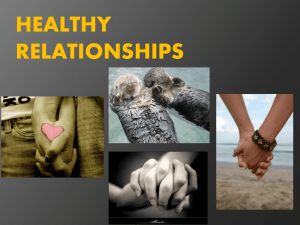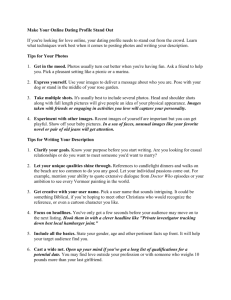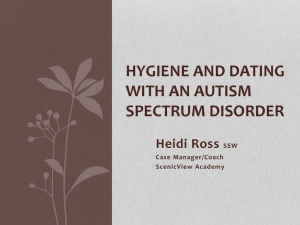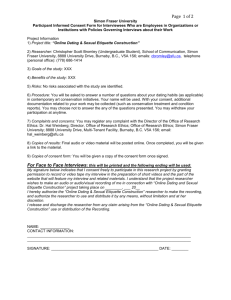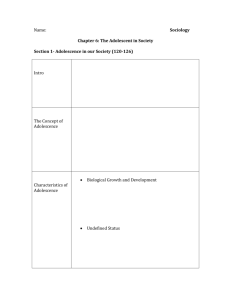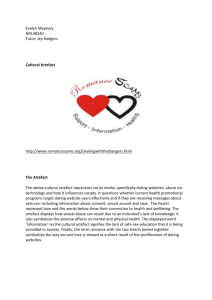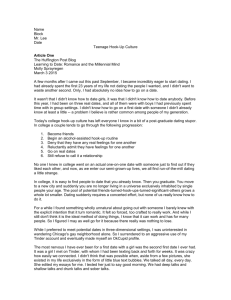Comparison and Contrast Essay- The Dating World
advertisement
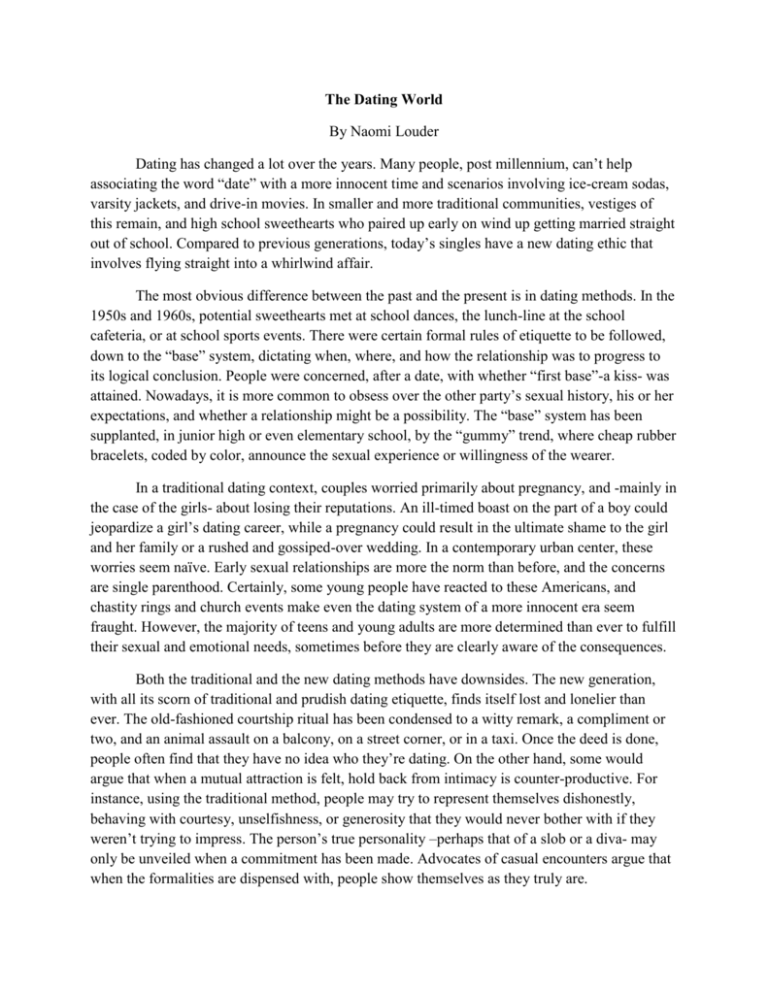
The Dating World By Naomi Louder Dating has changed a lot over the years. Many people, post millennium, can’t help associating the word “date” with a more innocent time and scenarios involving ice-cream sodas, varsity jackets, and drive-in movies. In smaller and more traditional communities, vestiges of this remain, and high school sweethearts who paired up early on wind up getting married straight out of school. Compared to previous generations, today’s singles have a new dating ethic that involves flying straight into a whirlwind affair. The most obvious difference between the past and the present is in dating methods. In the 1950s and 1960s, potential sweethearts met at school dances, the lunch-line at the school cafeteria, or at school sports events. There were certain formal rules of etiquette to be followed, down to the “base” system, dictating when, where, and how the relationship was to progress to its logical conclusion. People were concerned, after a date, with whether “first base”-a kiss- was attained. Nowadays, it is more common to obsess over the other party’s sexual history, his or her expectations, and whether a relationship might be a possibility. The “base” system has been supplanted, in junior high or even elementary school, by the “gummy” trend, where cheap rubber bracelets, coded by color, announce the sexual experience or willingness of the wearer. In a traditional dating context, couples worried primarily about pregnancy, and -mainly in the case of the girls- about losing their reputations. An ill-timed boast on the part of a boy could jeopardize a girl’s dating career, while a pregnancy could result in the ultimate shame to the girl and her family or a rushed and gossiped-over wedding. In a contemporary urban center, these worries seem naïve. Early sexual relationships are more the norm than before, and the concerns are single parenthood. Certainly, some young people have reacted to these Americans, and chastity rings and church events make even the dating system of a more innocent era seem fraught. However, the majority of teens and young adults are more determined than ever to fulfill their sexual and emotional needs, sometimes before they are clearly aware of the consequences. Both the traditional and the new dating methods have downsides. The new generation, with all its scorn of traditional and prudish dating etiquette, finds itself lost and lonelier than ever. The old-fashioned courtship ritual has been condensed to a witty remark, a compliment or two, and an animal assault on a balcony, on a street corner, or in a taxi. Once the deed is done, people often find that they have no idea who they’re dating. On the other hand, some would argue that when a mutual attraction is felt, hold back from intimacy is counter-productive. For instance, using the traditional method, people may try to represent themselves dishonestly, behaving with courtesy, unselfishness, or generosity that they would never bother with if they weren’t trying to impress. The person’s true personality –perhaps that of a slob or a diva- may only be unveiled when a commitment has been made. Advocates of casual encounters argue that when the formalities are dispensed with, people show themselves as they truly are. There are pitfalls to both of these ways of dating, but the fact is, most people are looking for a partner in life, and the only way to find one is to trust somebody. A high school sweetheart or the best-looking person at a party is not necessarily the ideal partner. For the most part, relationships succeed because there is a sounder basis to them than passion or romance. If a true friendship is possible between two people, when passion and excitement fade, there will still be a reason to stay together.




